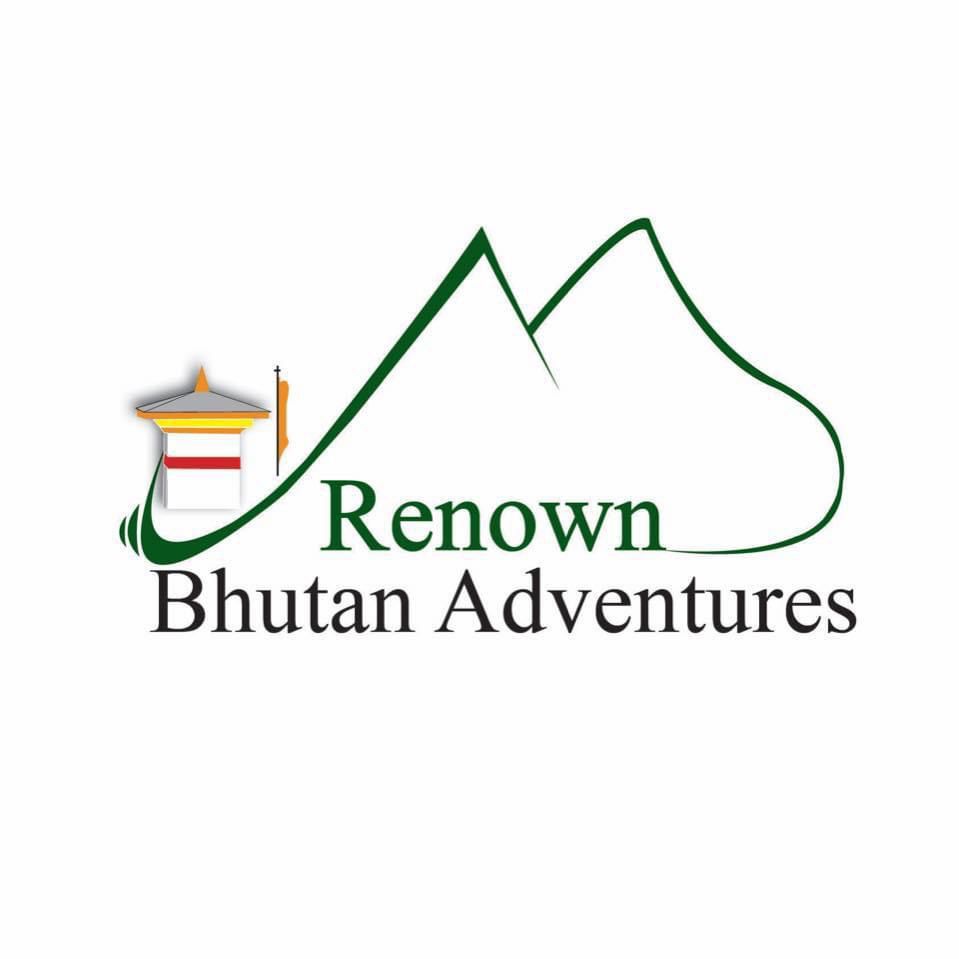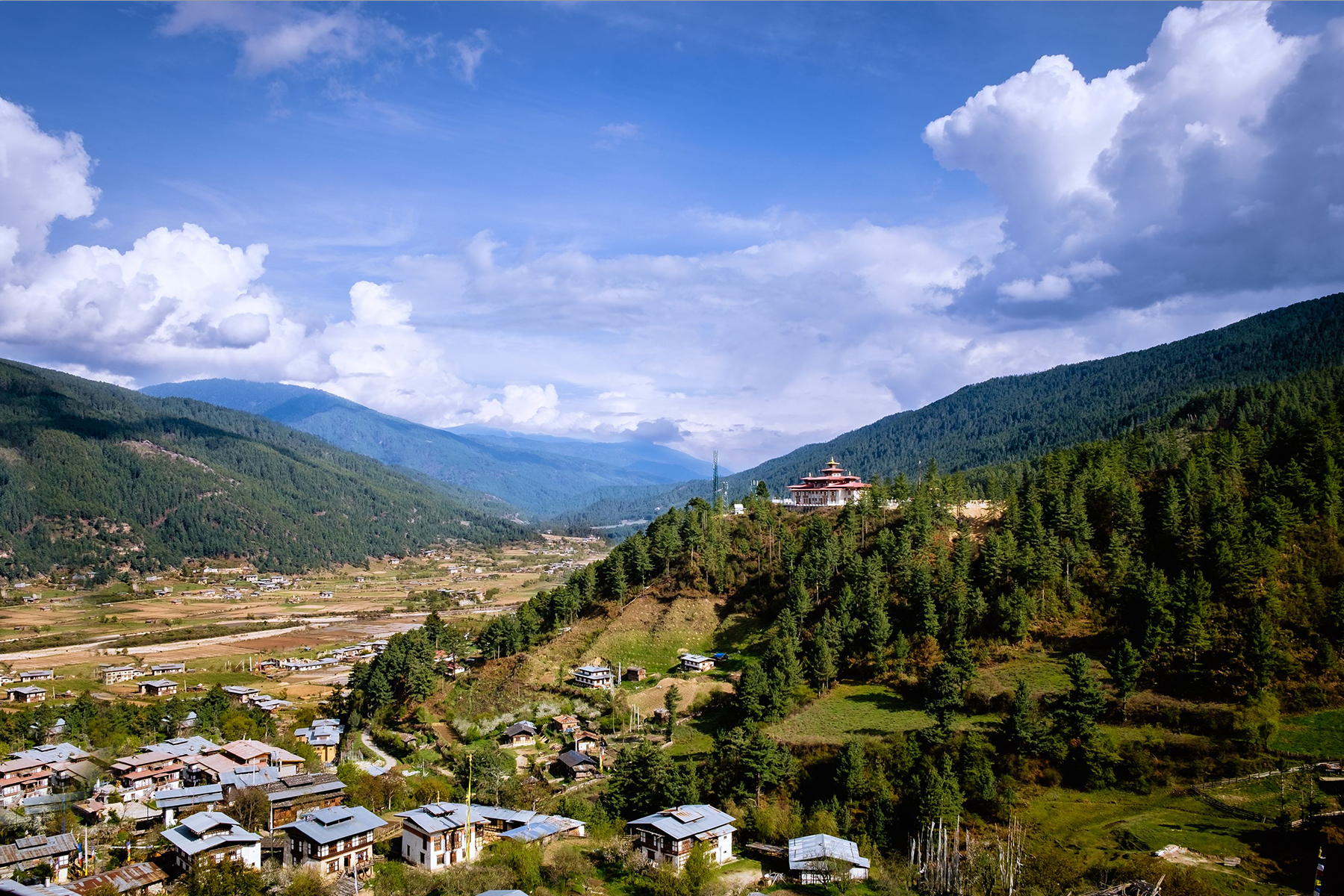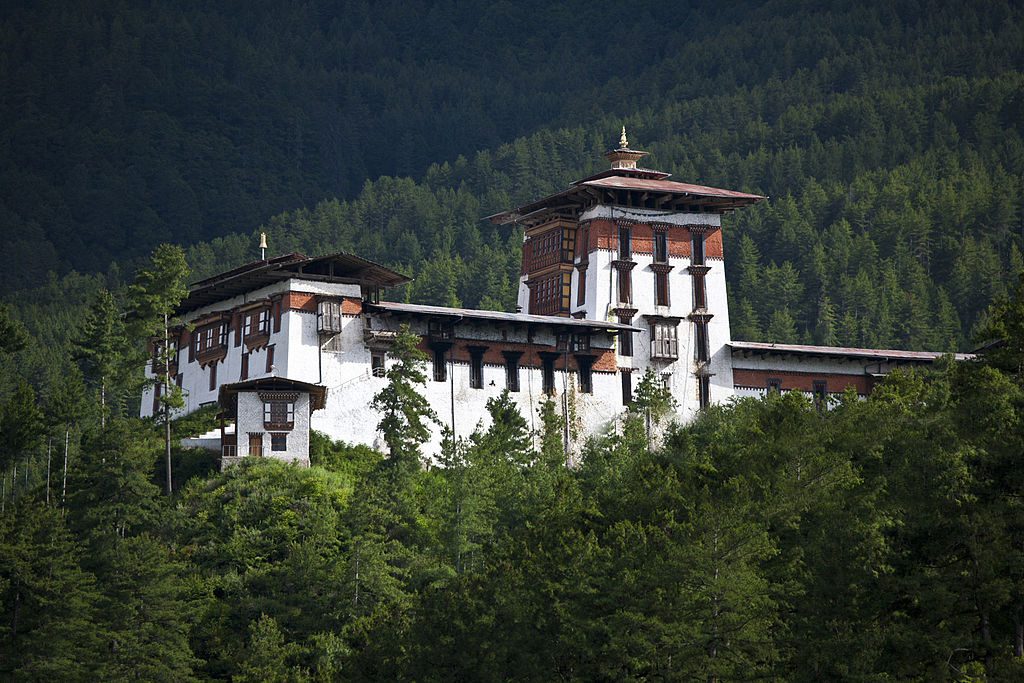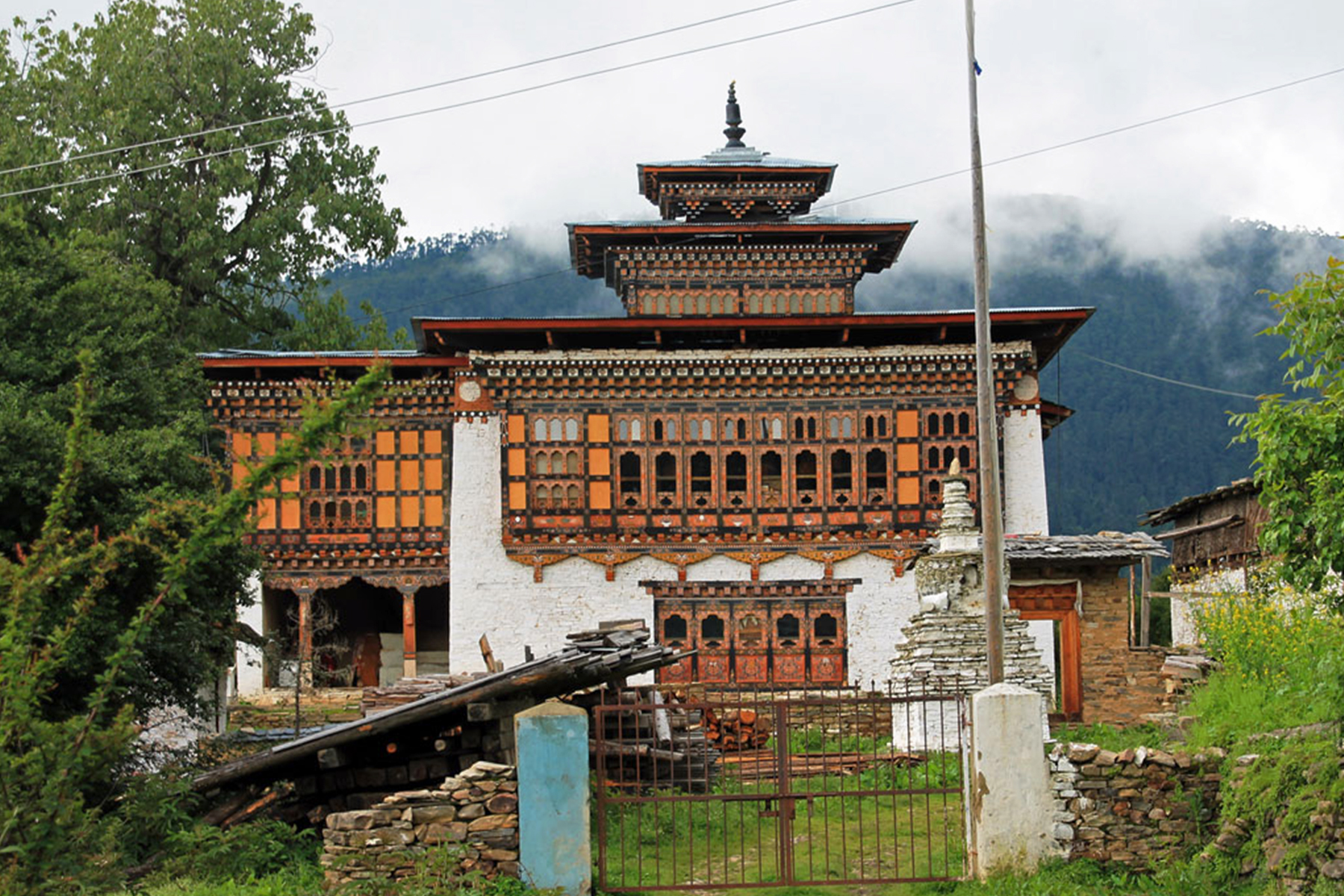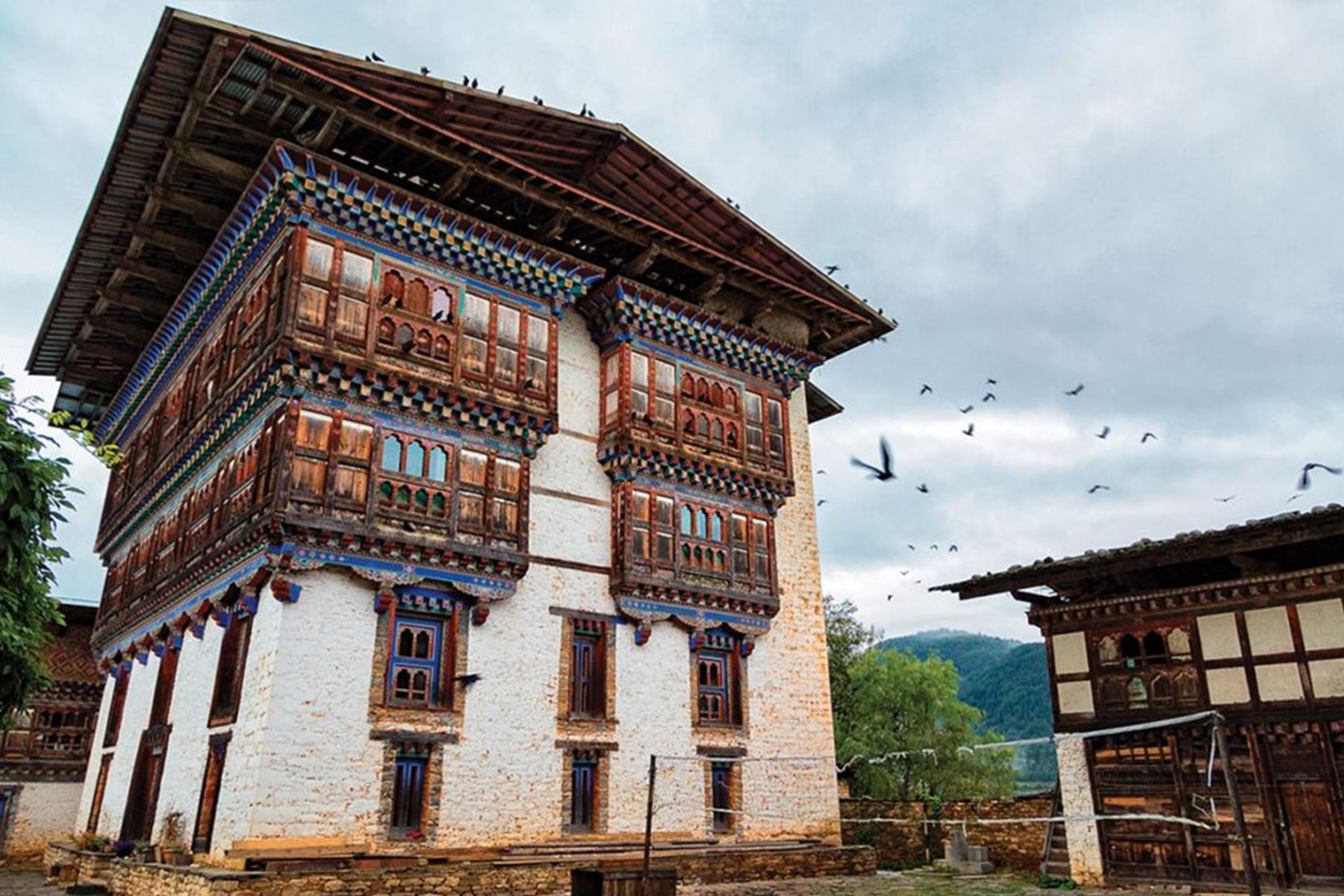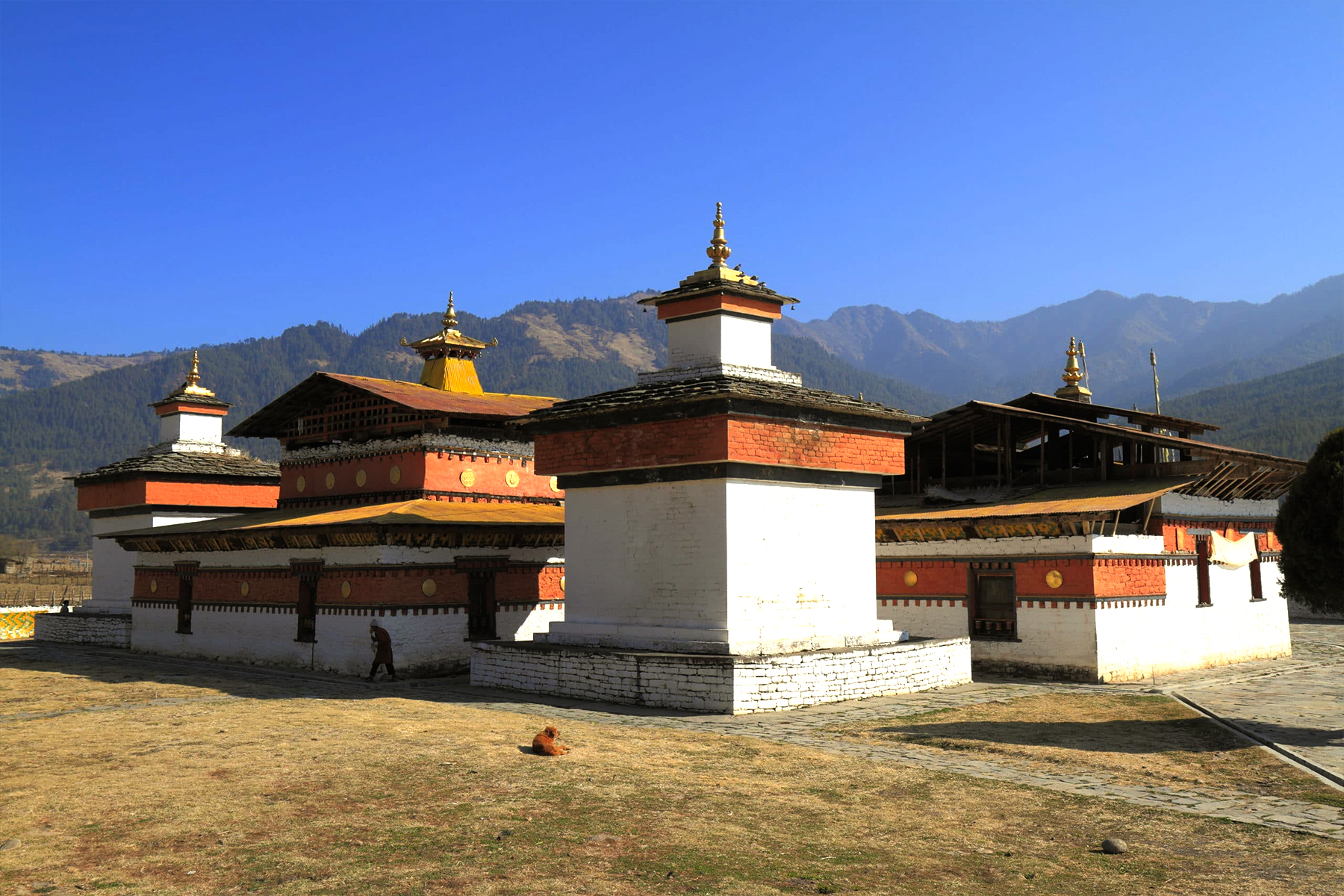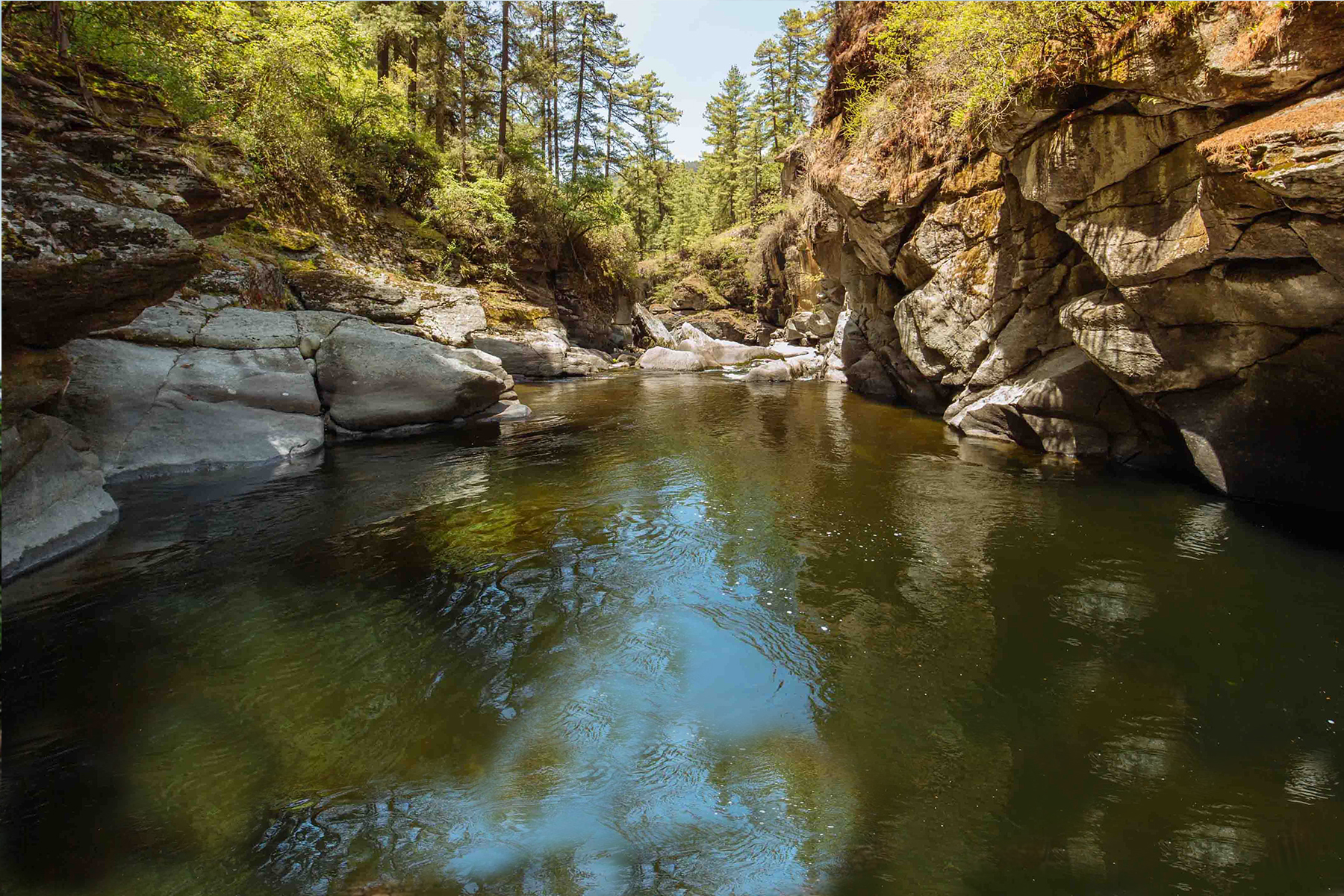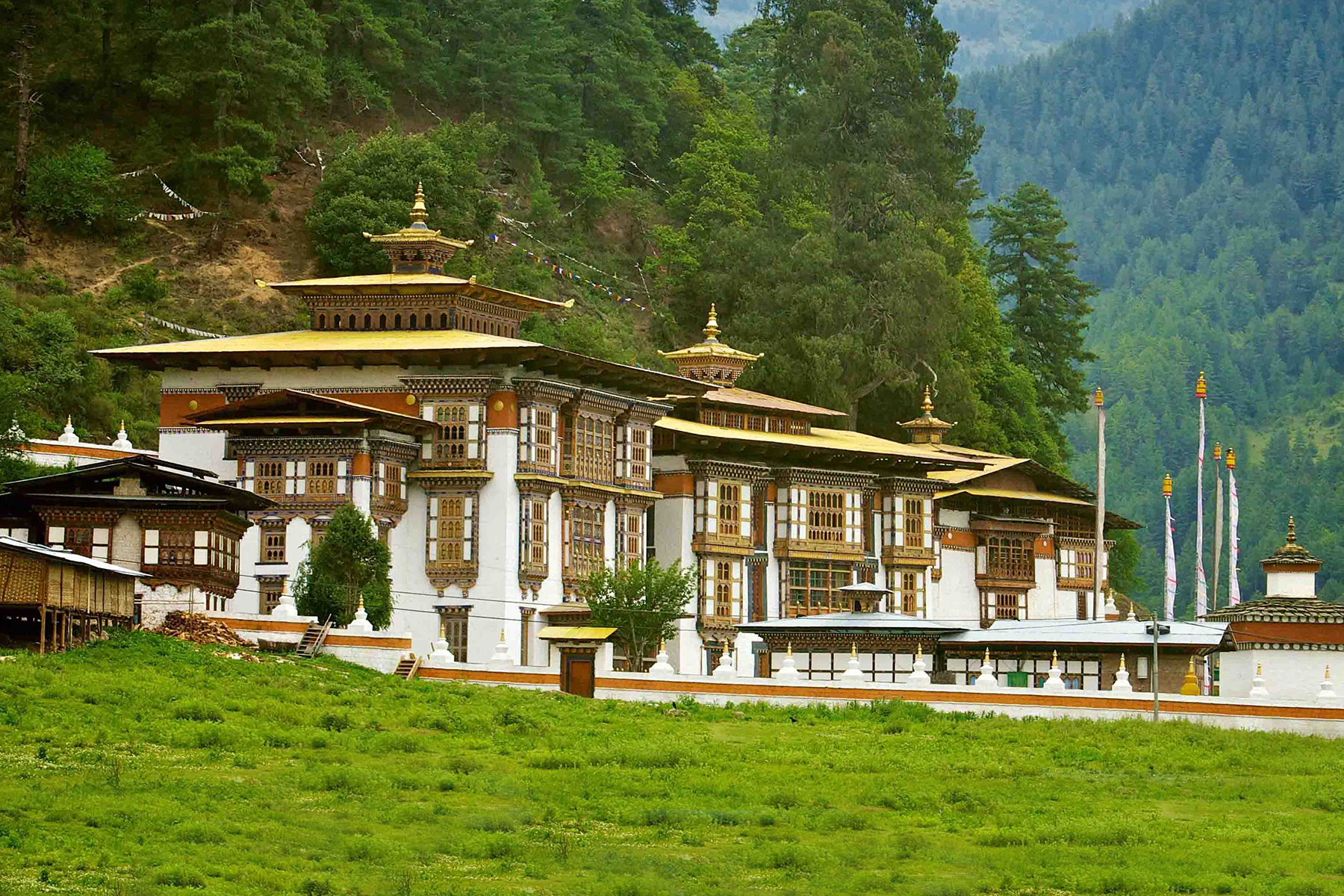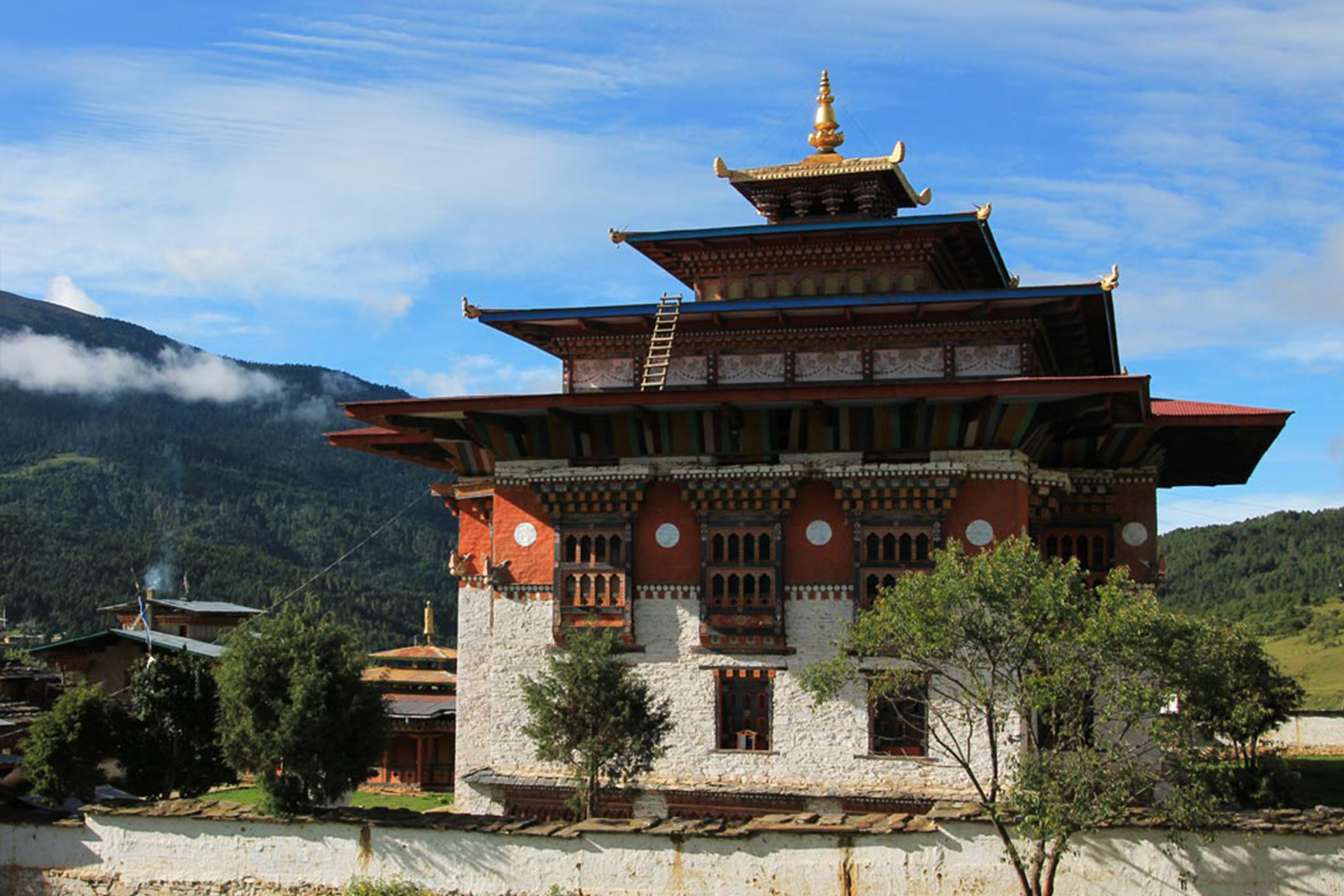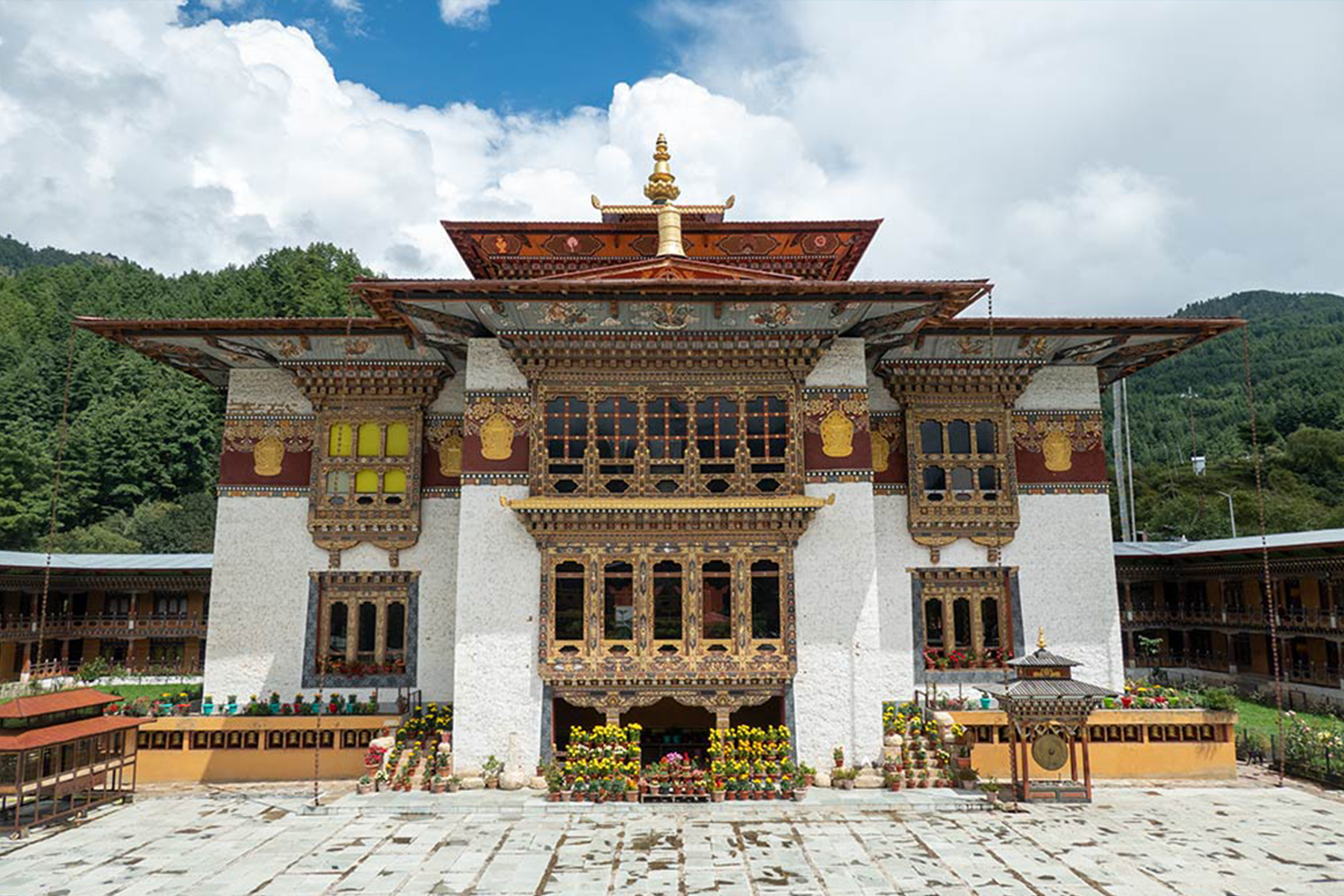Bumthang Valley
Bumthang
Brief History
In Central Bhutan, Bumthang is one of the most historic and religious sites in the country. The name Bumthang translates to “beautiful fieldâ€. Being located in the spacious and tree covered Bumthang (Chhoekhor) valley, the area is also a popular tourist destination, and consequently the town is served by several good quality hotels and craft shops. There are many guest houses. The bazaar is located on a street of single story building in an area of the town called Chamkhar.""
Jakar Dzong
Bumthang
Brief History
Located on the ridge overlooking the beautiful valley of Chamkhar in Bumthang, the name Jakar Dzong translates to “The Castle of the White Birdâ€. It was built in 1549 and later upgraded in 1646. The Dzong is now used as administrative centre for the people Bumthang valley and houses of the regional monk body.
Wangduecholing Palace
Bumthang
Brief History
The palace is the historic seat of Bhutan’s reining Wangchuck dynasty. The palace has one of the finest architecture in the country. It was built in 1857 by Trongsa Penlop Jigme Namgyal, the father of the First King of Bhutan.
Ogyencholing Palace
Bumthang
Brief History
Ogyen Choling was never so much a seat of political power as a center for religion. Throughout its history it was referred to by terms which alluded to its religious nature as being a monastery or hermitage. In fact the history of Ogyen Choling begins with the visit of the great Tibetan master of Buddhism, Longchen Rabjam (1308-63).
Jamba Lhakhang
Bumthang
Brief History
It is located in Chokhor Gewog in Bumthang. It is a ten-minute drive from the Bumthang main town. The monastery was built in the seventh century by the Tibetan king, Songtsen Gampo. It is one of 108 monasteries he built to subdue evil spirits in the Himalayan region. It is here, one of the most popular dances held in the annual Jampa lhakhang Drub is the naked dance.
MeBar Tsho / The Burning Lake
Bumthang
Brief History
It is located in Tang and is a 30-minute drive from Chamkhar town. It is considered as one of the most sacred sites in Bumthang. The legend Terton Pema Lingpa (treasure discoverer) had a vision of the sacred treasure that Guru Rinpoche had hidden within the lake. Pema Lingpa held a burning butter lamp in his hand and jumped into the lake. When he re-emerged holding a chest and a scroll of butter lamp still burning. On auspicious days people offer butter lamps at the Lake. Many tourist visits the site to observe spectacular beauty of this important historical and religious site.
Kurjey Lhakhang
Bumthang
Brief History
It is located at Kurjey in Bumthang. It is a 15-minute drive from Chamkhar town. This monastery comprises three temples. The right was built in 1652 on the rock face and the second temple was built on the other site of a cave containing a rock with the imprint of Guru Padmasambhava’s body. The third temple was built by the Queen Grandmother Ashi Kesang Choden Wangchuck. These three temples are surrounded by a wall with 108 stupas. There is drupchu (holy water) about a hundred meters above the temple and is said to be created by Guru Rinpoche.
Thangbi Goemba
Bumthang
Brief History
It is located at Chamkhar, Bumthang. It is about a 30-minute walk from the nearest road head. It was founded by Shamar Rinpoche of kagyul religious school in 1470 .
Tamshing Monastery
Bumthang
Brief History
It is located five kilometer away from the main town of Bumthang. It was built in 1501 by the treasure discoverer, Terton Pema Lingpa, who still remains one of the most popular Bhutanese saints whose coming was prophesied by Guru Rinpoche centuries earlier. A skilled tantric master and an artist he sculpted the main statues and painted the frescoes, which can be seen even today.
Konchogsum Lhakhang
Bumthang
Brief History
Kenchosum Lhakhang, Bumthang (referred to as Tselung Lhakhang in Pema Kathang and Choekhor Lakhang during the time of Pema Lingpa) was built in the 9th century (the initial construction was started at the end of 8th century and completed in 9th century), upon the instruction of Guru Rinpoche. Guru Rinmpoche instructed King Thrisong Deutsen of Tibet to build a three storeyed temple similar to Samye Monastery (of Tibet) in Bumthang to serve as centre for flourishing Dharma, Peace and Happiness.
Bhutan is the last Himalayan kingdom, shrouded in amazing snow Peak Mountains and shadowy forests that create picturesque landscape. But that’s not all; the unique and best thing about Bhutan is that it is the only country that is 72% covered in forests making it not only carbon-neutral but the world’s only carbon negative country. Apart from this, Bhutan is a place where traditional Buddhist culture meets majestic fortress like dzongs and monasteries, it is undoubtedly a magical and mystical place to be. Its unique monastic architecture and the graffiti on the walls that bear paintings of penises as a sign to drive away the evil make Bhutan a sui generis destination. Reputed to be the last Shangri La, this one of its kind country is certainly the best place to visit for family vacation, honeymoon tours and even for adventure holidays. And to be a part of this enthralling place you can have your own share of Bhutan experience through this guided list of the top tourist attractions that you must see and do.
